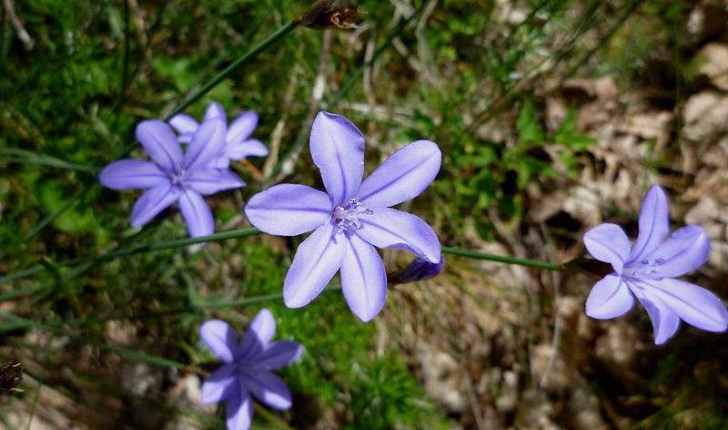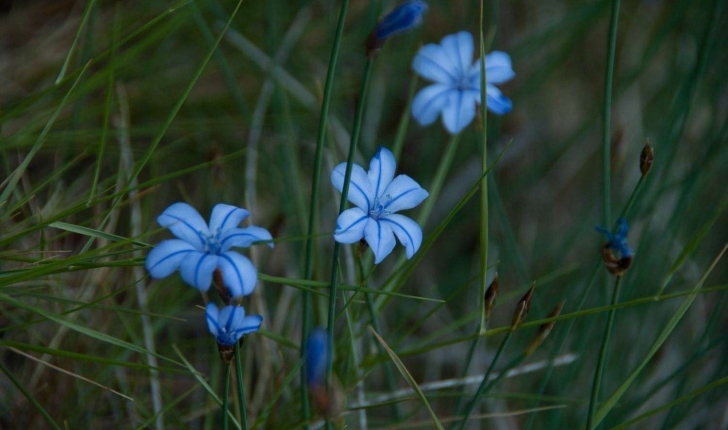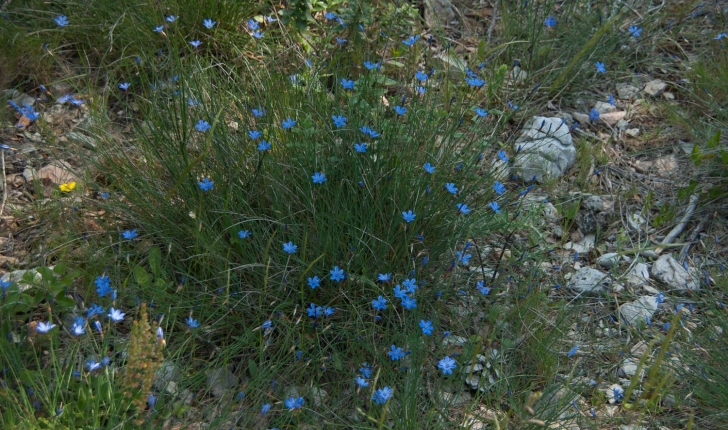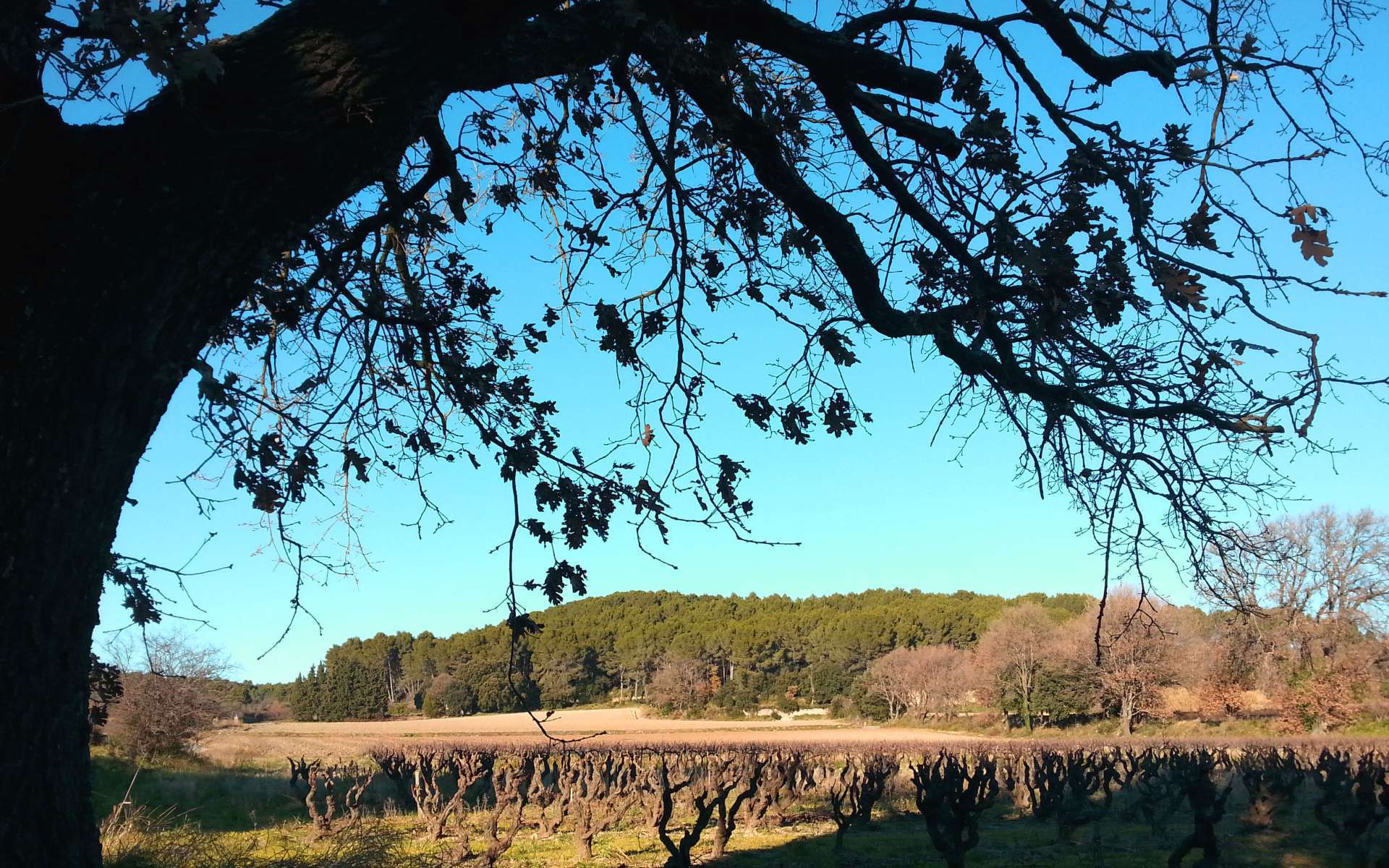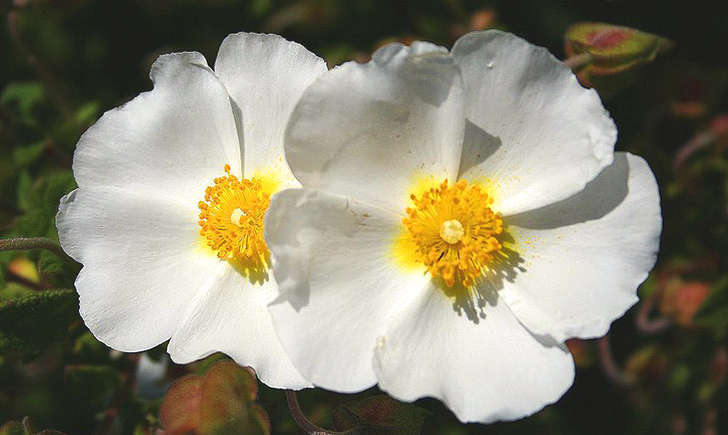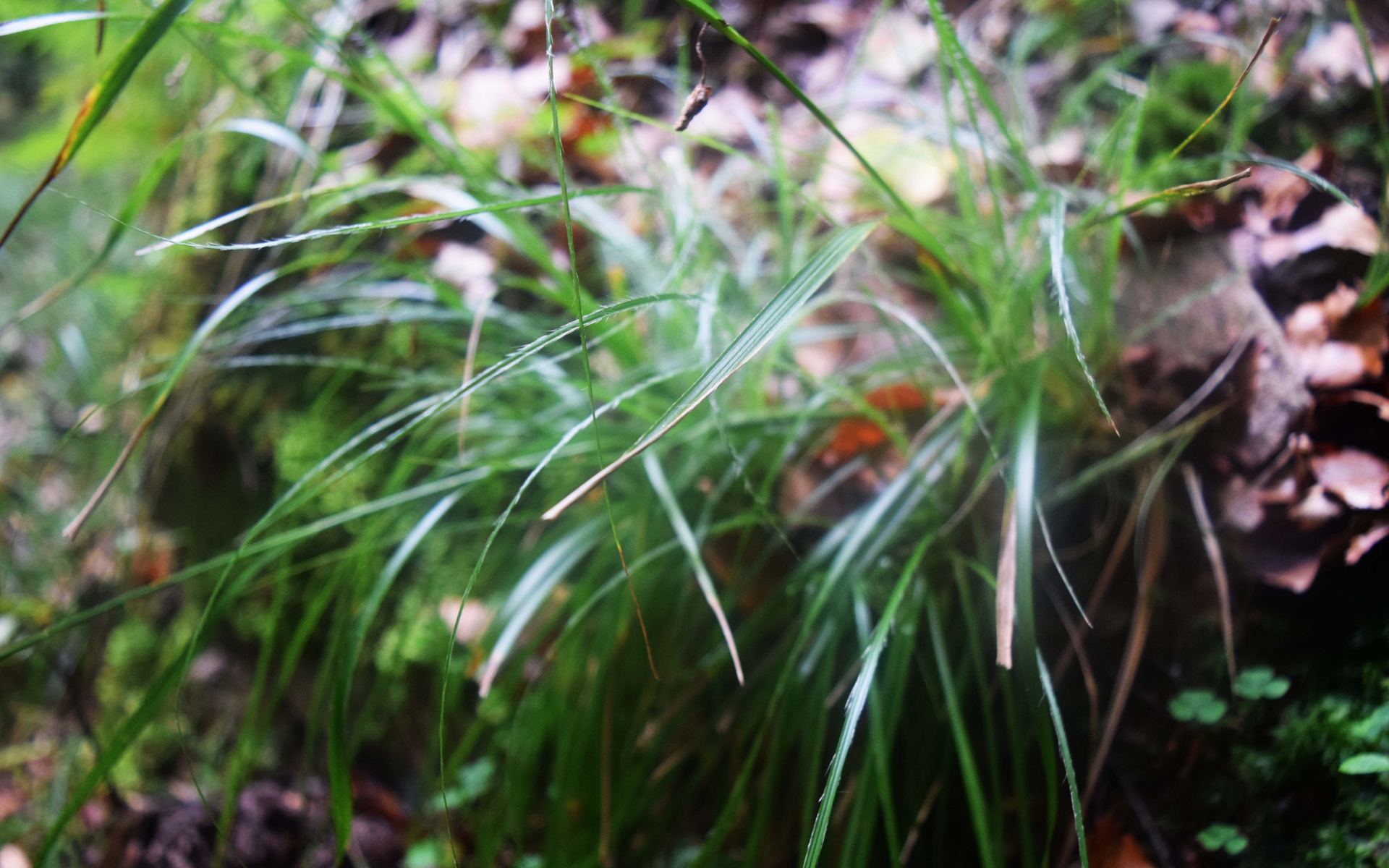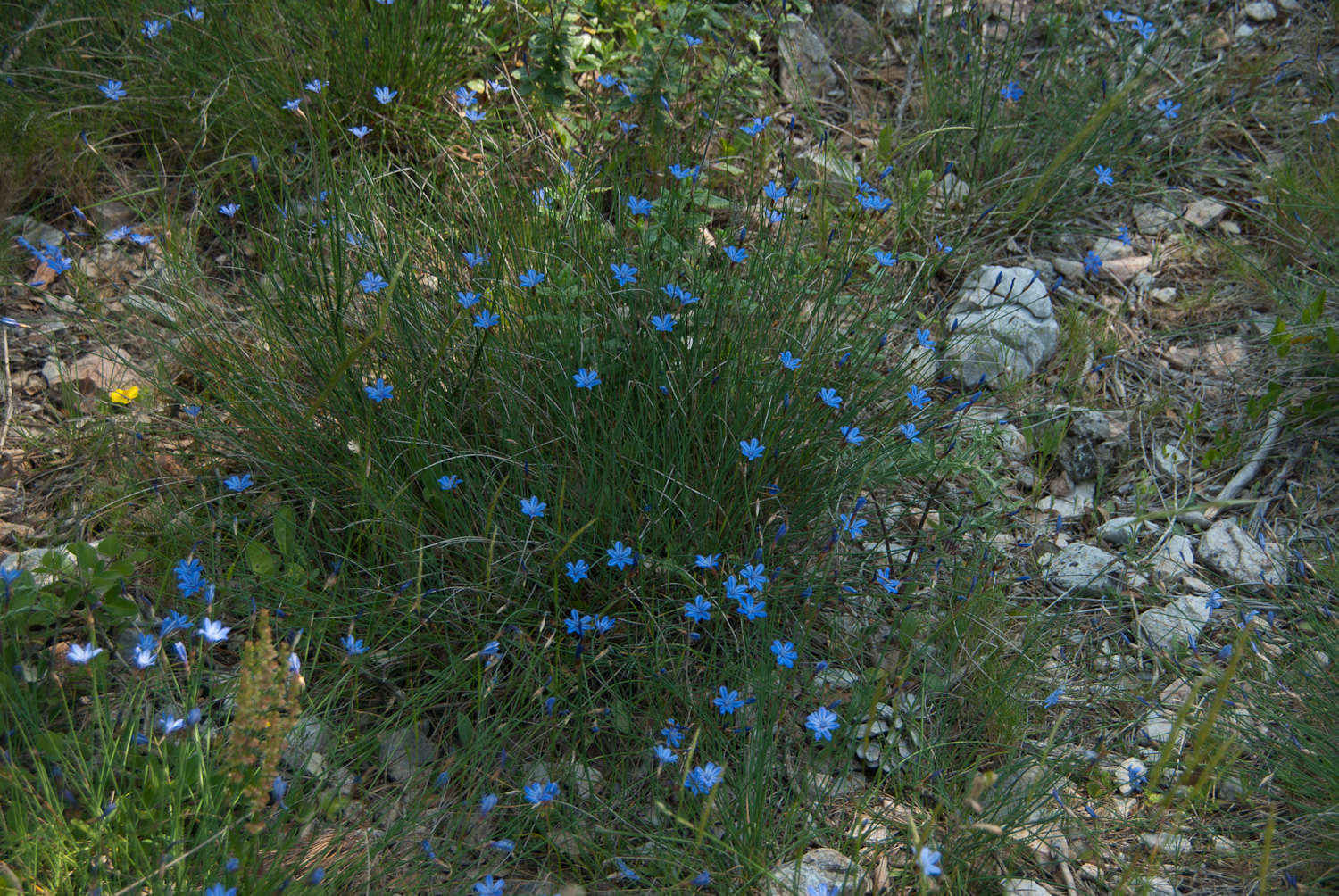
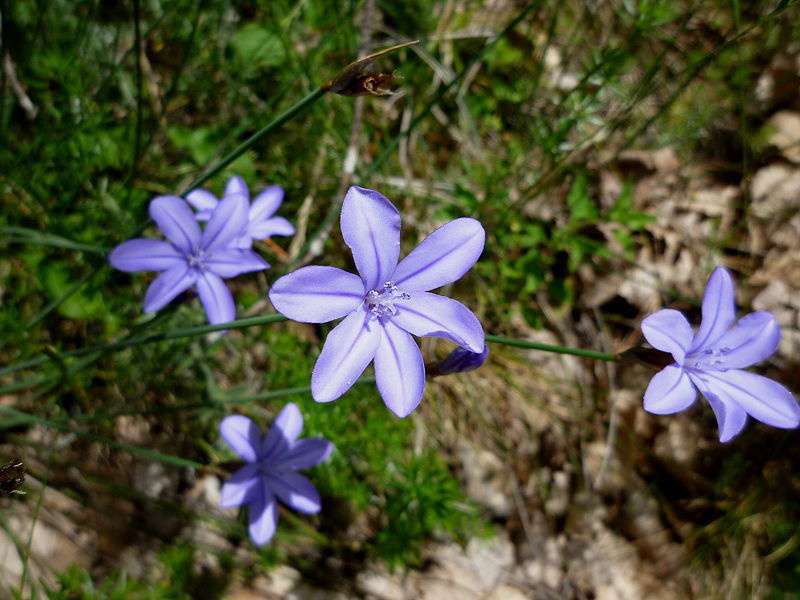
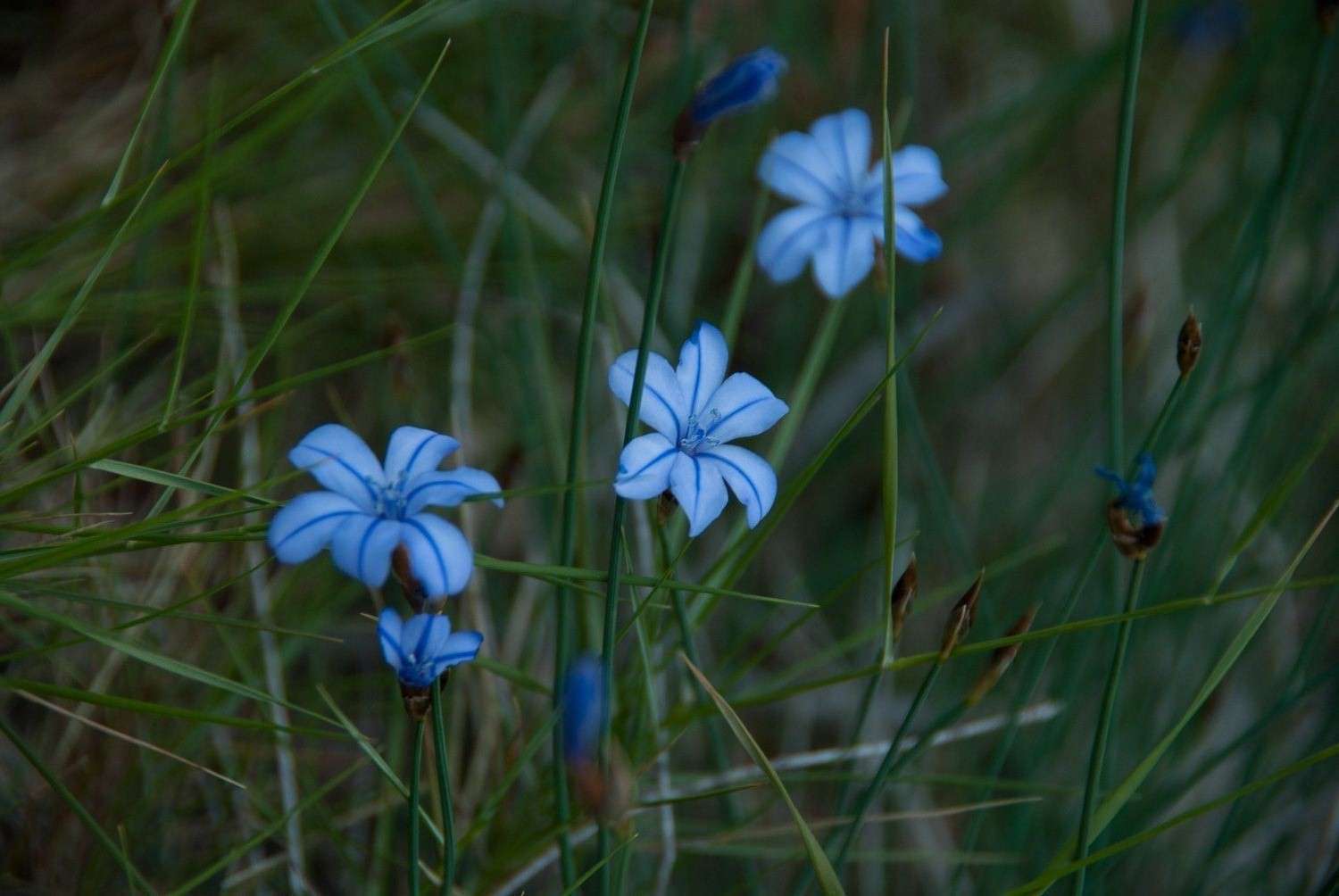
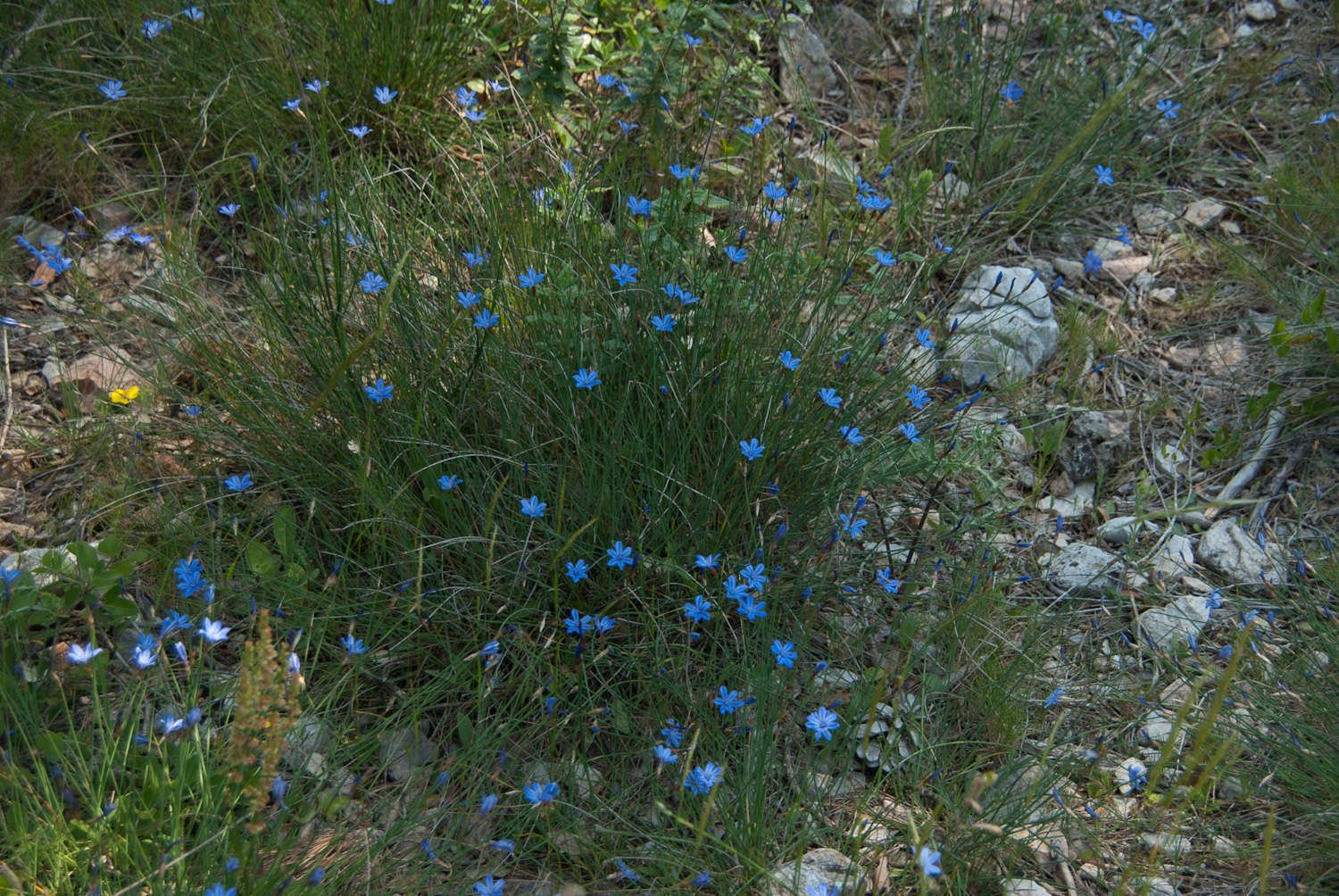
Cette plante aux allures de jonc est caractéristique des garrigues du Sud de la France. Lors de la floraison, à partir du mois d’avril, ses fleurs bleues sortent de manière isolée aux extrémités de chaque tige. Son nom signifie en grec « fleur sans feuilles ». En effet, ses feuilles sont très réduites à la base des tiges rigides. Cette plante est très appréciée des moutons et des chevaux.






